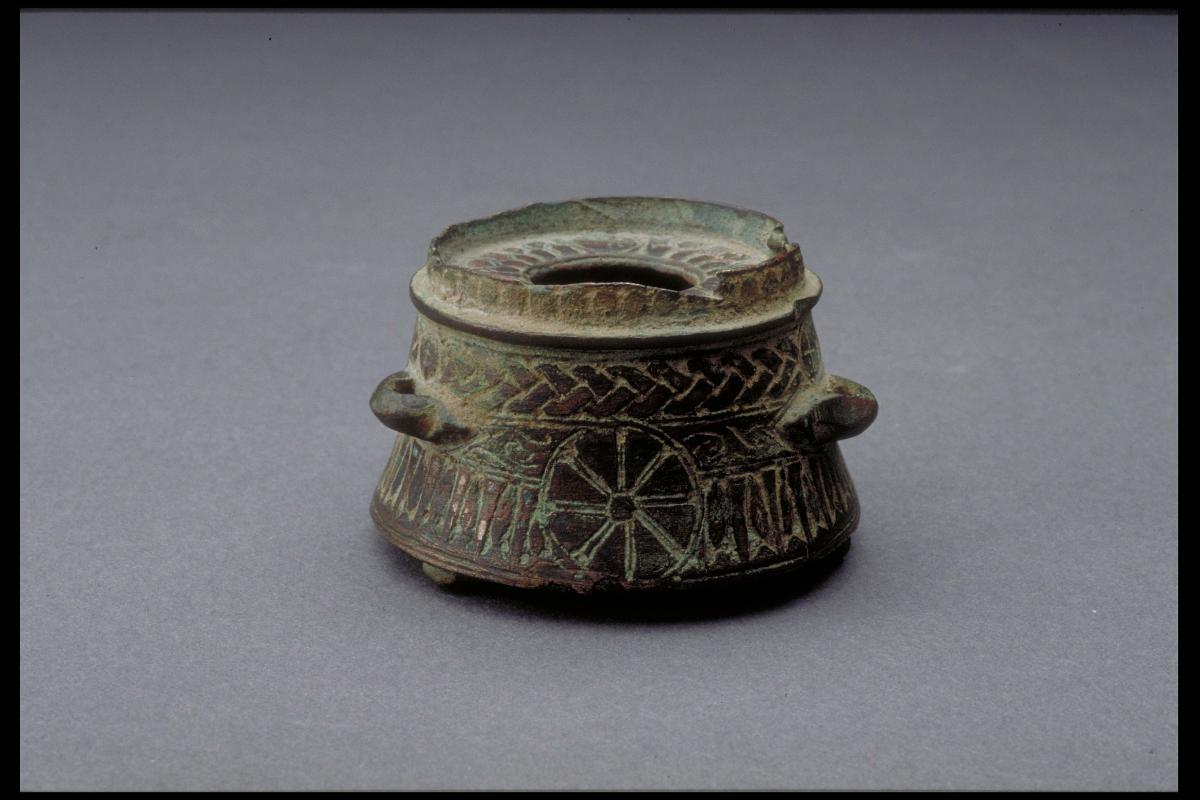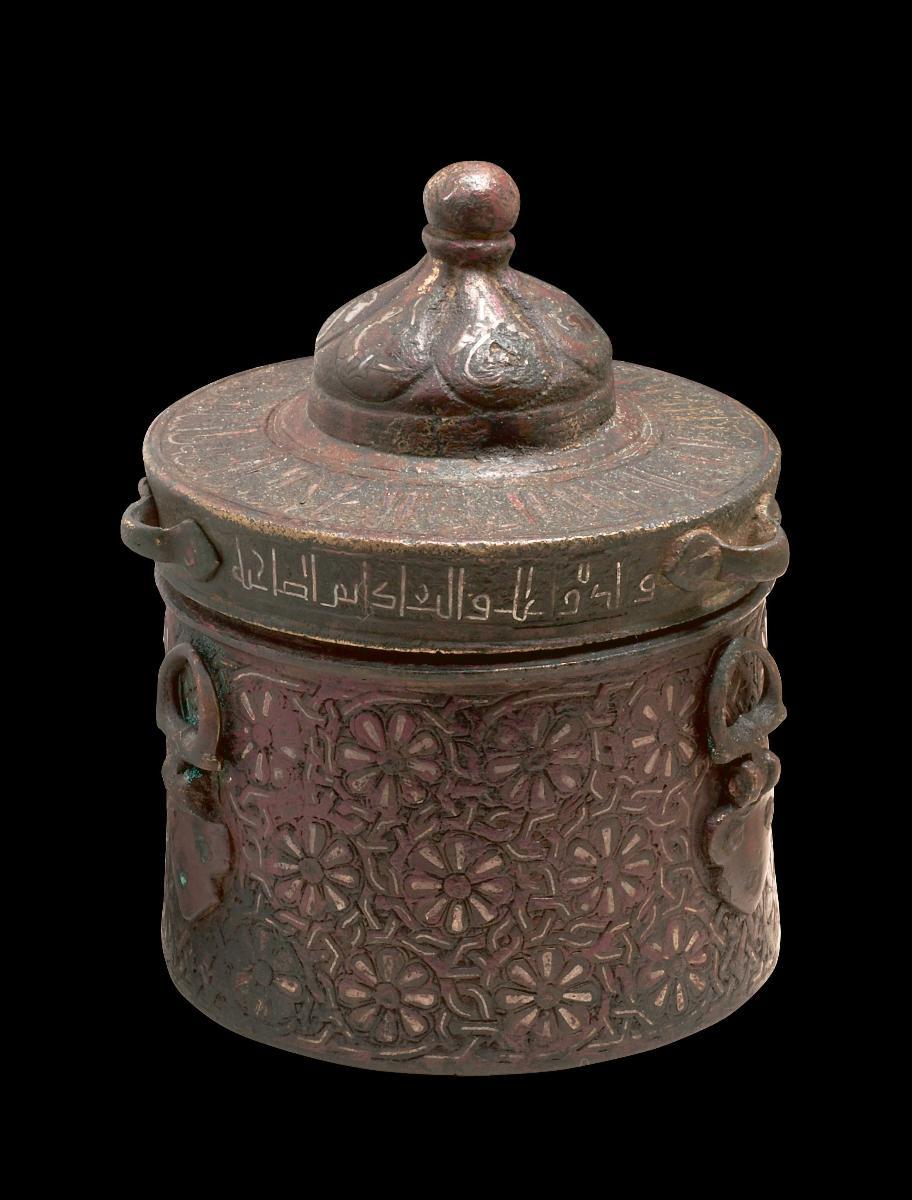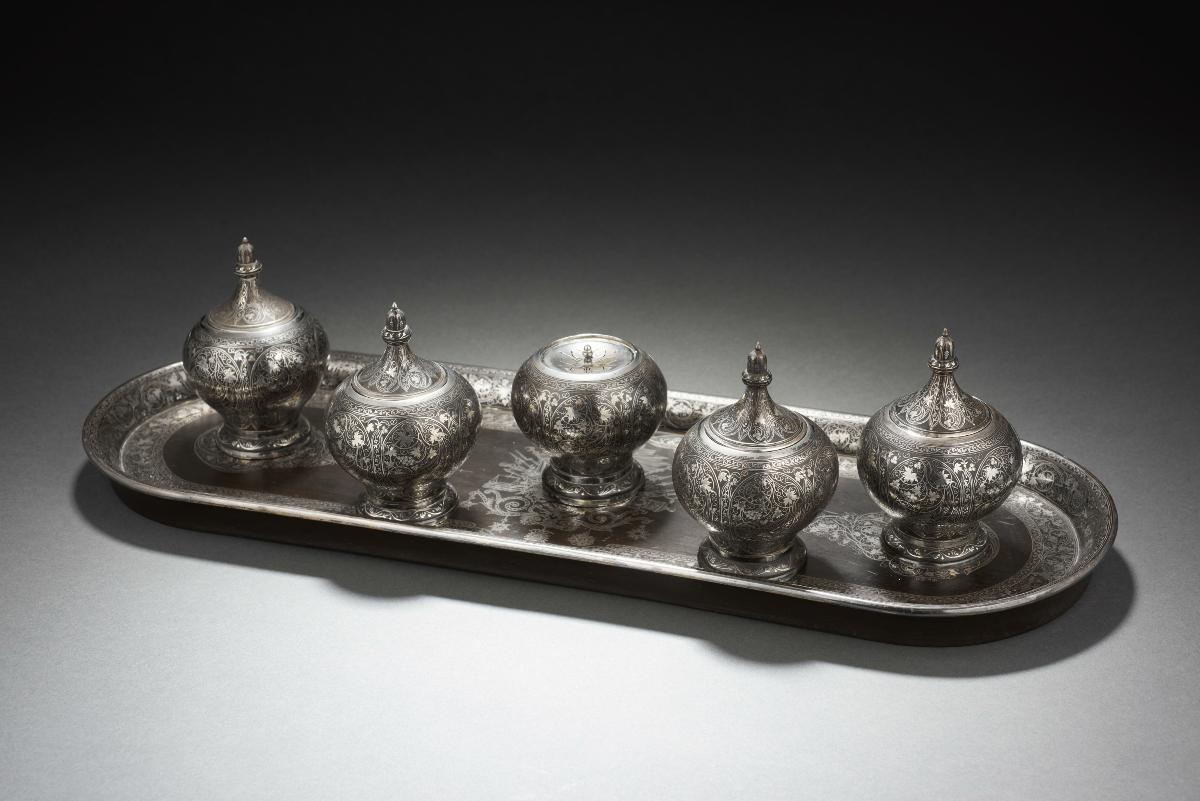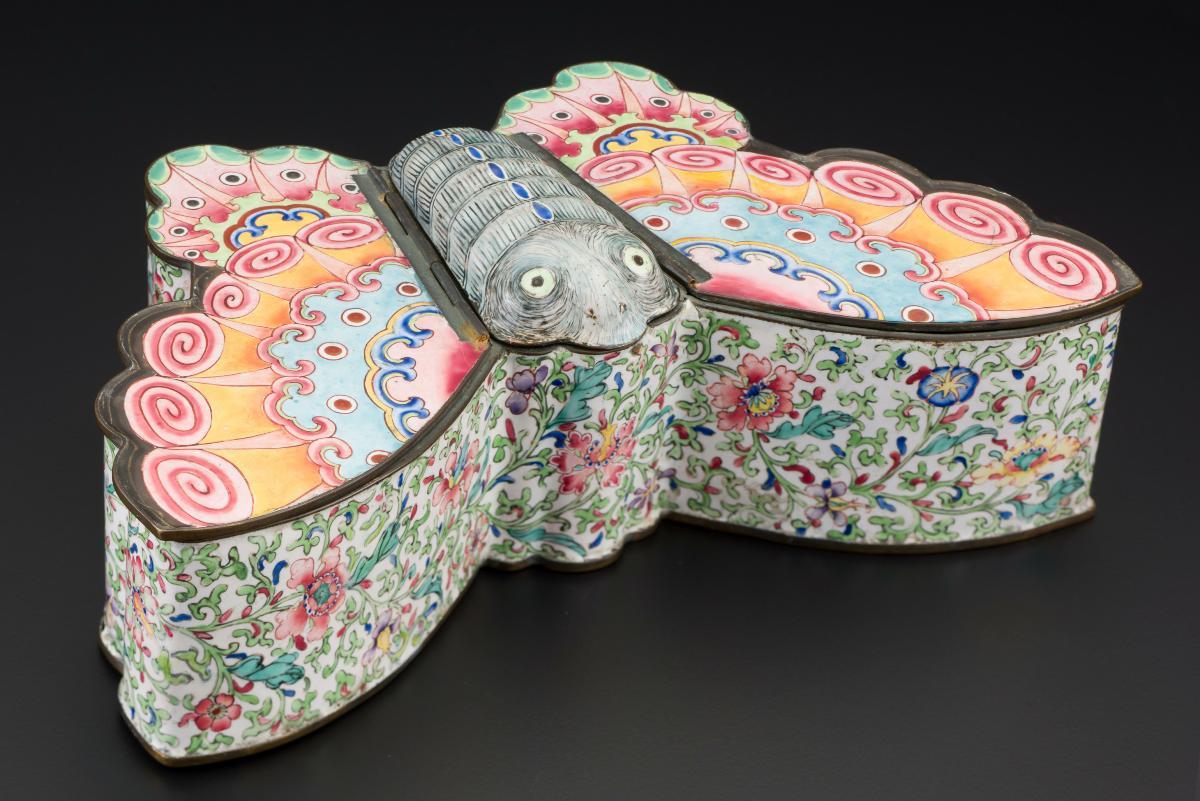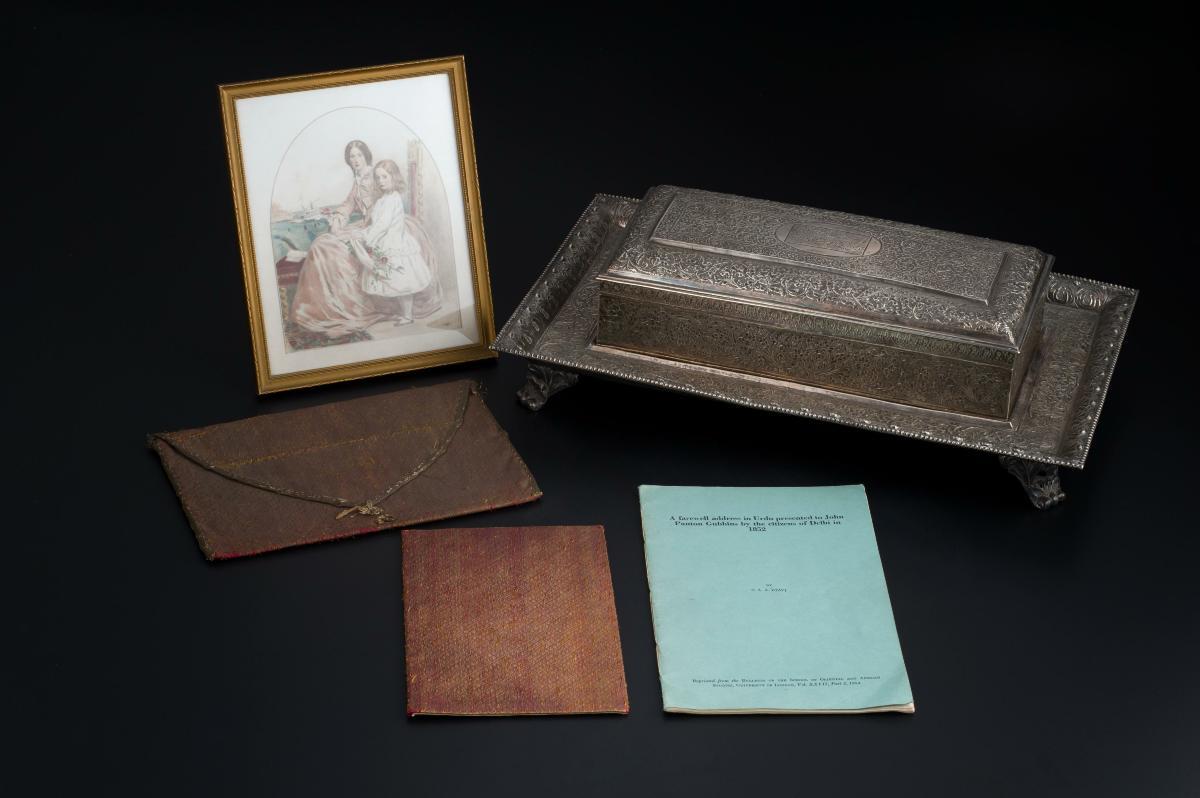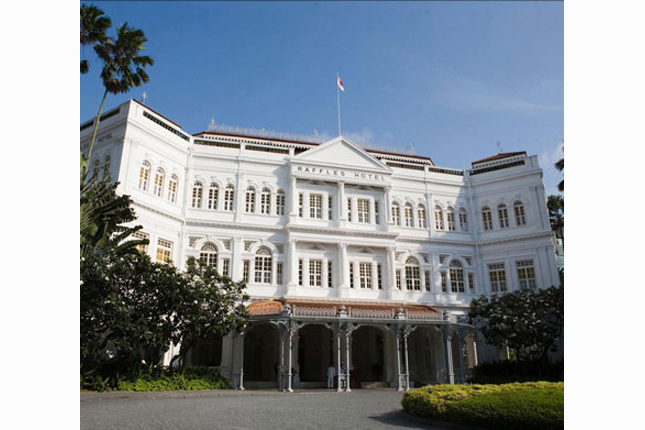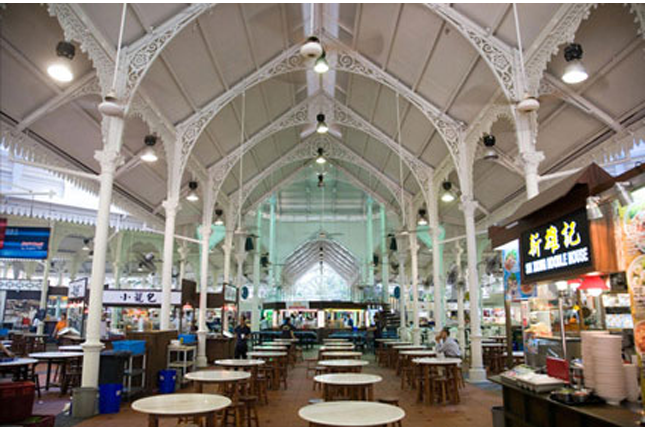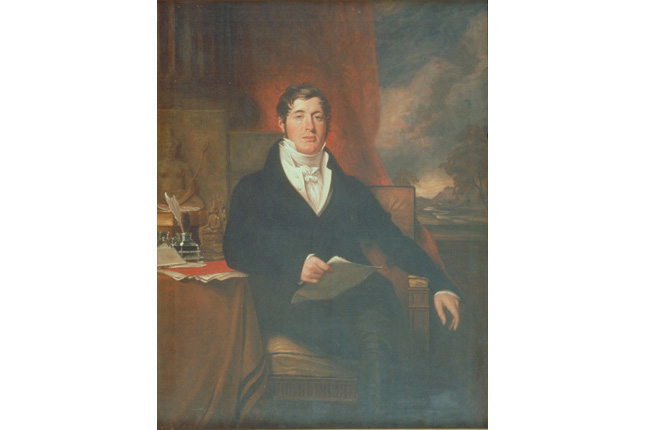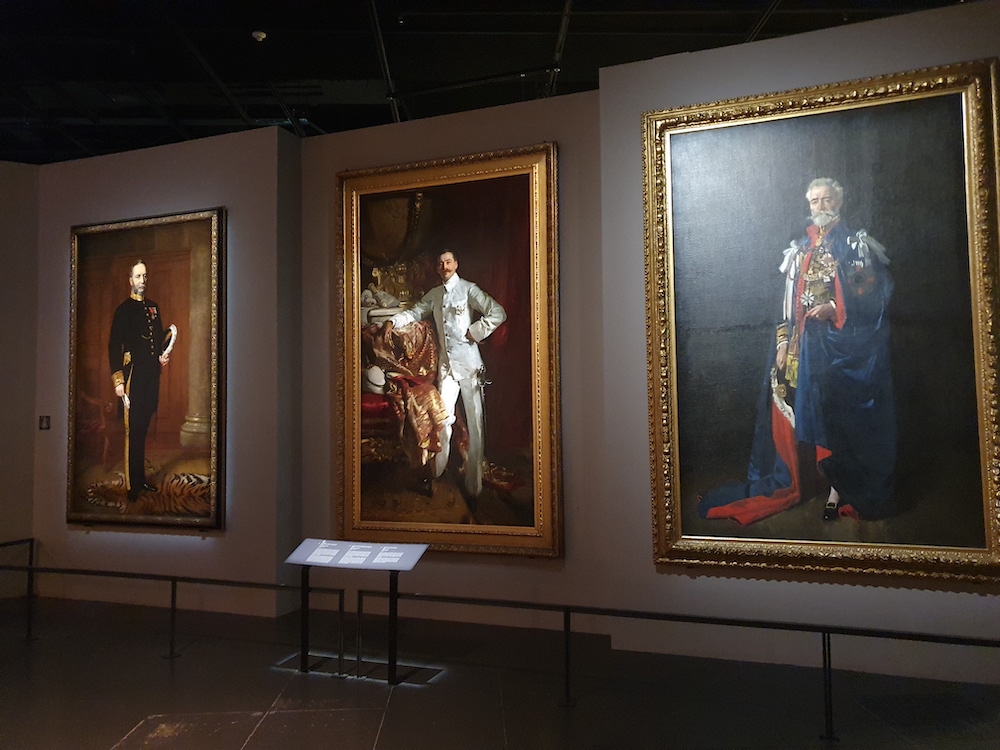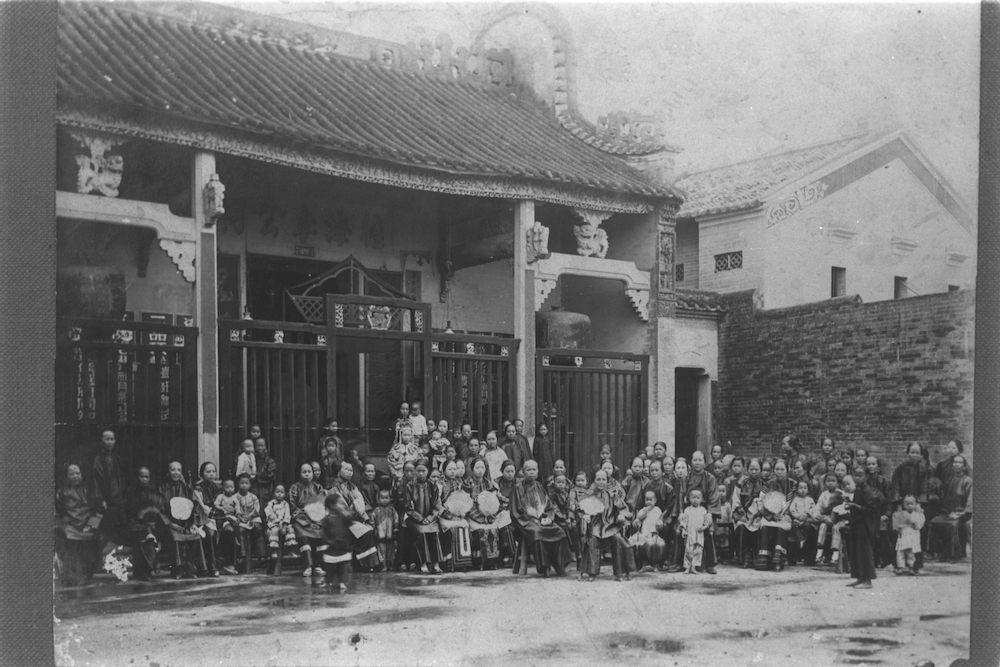x Dia: 6.9
This squat bronze inkwell is missing its original lid. The body of the inkwell shows traces of silver inlay. It is fairly rare to find inlaid vessels intact as the precious metal inlays were often dug out for re-use during economically difficult times. There is a relief plait-work band below the rim and the body is engraved with various geometric designs. There is a large pseudo-calligraphic band and a decorative wheel-like roundel. Metalwork during the Mamluk empire in Syria and Egypt (1250–1517) was often adorned with large bands of benedictory script and roundels traditionally intended for the emblematic blazon of an ‘amir’ (officer) of the Mamluk courts. This form of decoration was probably adopted by the metalwork artisans of Iraq, and this piece was probably owned by an individual who was educated and wealthy enough to afford a silver inlaid vessel.The inkwell has three lugs which, with the help of a chain or rope, would have enabled the inkwell to be hung. This inkwell would have been part of the calligrapher’s tools. The inkwell was traditionally stuffed with silk wads soaked in ink so that the calligrapher’s reed ped could pick up an even amount of ink when dipped into the inkwell. Calligraphy has always been considered the noblest and most featured art in the world of Islam as it transmits the Divine Revelations of God. Calligraphers or scribes were held with special respect as they were expected to be good in their technical skills as well as their spiritual side.




